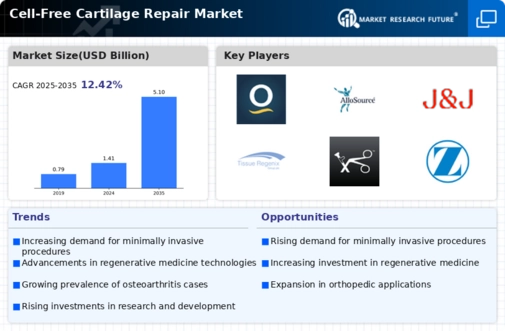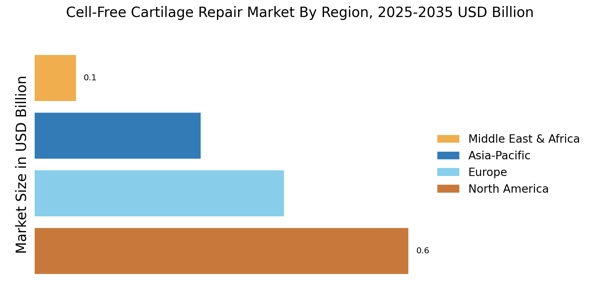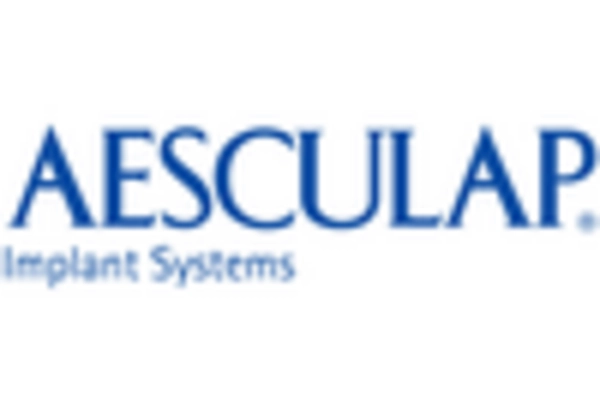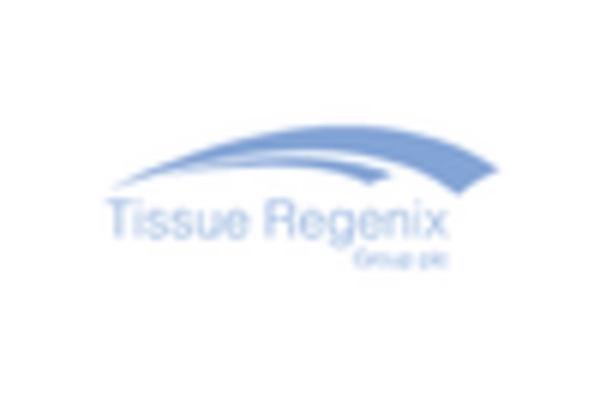Rising Incidence of Cartilage Injuries
The increasing prevalence of cartilage injuries, particularly among athletes and the aging population, appears to be a primary driver for the Cell-Free Cartilage Repair Market. As more individuals engage in high-impact sports, the likelihood of cartilage damage escalates. Furthermore, the aging demographic is more susceptible to degenerative joint diseases, which often necessitate cartilage repair solutions. According to recent estimates, the incidence of cartilage injuries is projected to rise by approximately 15% over the next five years. This growing demand for effective treatment options is likely to propel advancements in cell-free cartilage repair technologies, thereby expanding the market.
Regulatory Support for Advanced Therapies
Regulatory bodies are increasingly supportive of advanced therapies within the Cell-Free Cartilage Repair Market. Streamlined approval processes for innovative treatments are encouraging companies to invest in research and development. This regulatory environment is particularly favorable for cell-free approaches, which often demonstrate safety and efficacy without the complexities associated with cell-based therapies. As a result, the market is likely to see a rise in the number of approved products, which could enhance competition and drive down costs for consumers. Analysts predict that the number of new cell-free cartilage repair products entering the market could double within the next five years.
Increased Investment in Orthopedic Research
The Cell-Free Cartilage Repair Market is experiencing a surge in investment directed towards orthopedic research and development. Governments and private entities are recognizing the economic burden associated with untreated cartilage injuries and are allocating funds to explore innovative repair solutions. This influx of capital is fostering collaborations between research institutions and industry players, leading to the rapid development of new therapies. It is estimated that funding for orthopedic research could increase by 25% in the coming years, which may significantly enhance the landscape of cell-free cartilage repair technologies.
Technological Advancements in Regenerative Medicine
Innovations in regenerative medicine are significantly influencing the Cell-Free Cartilage Repair Market. The development of novel biomaterials and scaffolds that facilitate cartilage regeneration without the need for cell-based therapies is gaining traction. For instance, advancements in 3D printing technology allow for the creation of customized implants that mimic natural cartilage properties. This shift towards more effective and less invasive treatment options is expected to enhance patient outcomes and satisfaction. Market analysts suggest that the segment of cell-free therapies could witness a growth rate of over 20% annually, reflecting the increasing adoption of these advanced techniques.
Growing Awareness and Acceptance of Minimally Invasive Procedures
There is a notable trend towards minimally invasive procedures within the Cell-Free Cartilage Repair Market. Patients are increasingly seeking treatment options that offer reduced recovery times and lower risks of complications. As awareness of the benefits of such procedures grows, healthcare providers are more inclined to adopt these techniques. This shift is supported by data indicating that minimally invasive cartilage repair methods can reduce hospital stays by up to 30%. Consequently, the demand for cell-free cartilage repair solutions that align with these preferences is likely to rise, further driving market growth.


















Leave a Comment